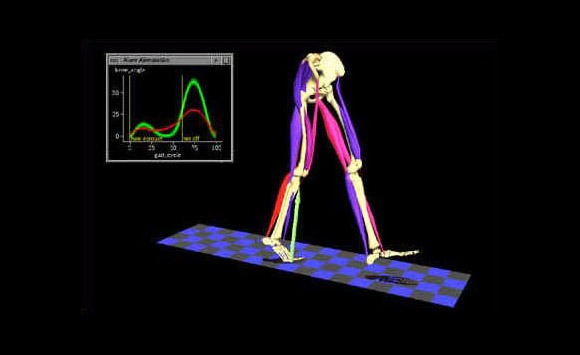The hamstrings are a crucial component in walking. They cross both the hip joint and the knee joint (except for the Biceps short head.) These muscles can extend the hip and flex the knee via concentric contraction on command. However, during walking, they are used eccentrically to slow hip flexion and tibial extension at the end of the walking swing phase (before heel strike).
The opposite leg engages the hamstring to ensure that the hip does not continue to flex. Throughout the stance phase, the hamstrings act to stabilise the pelvic girdle and propel the body, and therefore the centre of mass, forward. The faster the walking pace the more muscular activity is needed to maintain stability.
From this, we can see that any weakness in the hamstrings can limit the ability to stop the hip flexion in the stance leg. Any weakness may result in anterior pelvic tilt and thereby an excessive lumbar lordosis, especially if the gluteus maximus is weak as well.
Conversely, in patients with excessive tightness of the hamstring, this leaves the person vulnerable to injury during the terminal swing as the stride length is diminished, there is prolonged knee flexion and often this remains throughout swing phase until heel strike. This will, in turn, diminish the lumbar lordosis and may result in a flattening of the gluteal muscles.
Hamstring shortness is often a result of a sedentary lifestyle and prolonged periods in the seated position. The easiest way to counteract this is consistent breaks and standing, teamed with daily hamstring stretches.
In running hamstring fatigue can result in shuffle run, where the strides are very short and feet do not raise much from the ground. This can manifest as bilateral or unilateral, a shorter stride appearing on the affected side.
Conversely, a common complaint while running is pain felt in the hamstrings, this is often not caused by the hamstrings themselves but the quadriceps. Weakness in the quadriceps can cause pain in the hamstrings as there is no antagonistic strength to pull the hip back into flexion once the hamstrings have created the extension
The linked article looks at hamstring strain in vivo: Biomechanical response to hamstring muscle strain injury
Miranda Asher, Biomedical Engineer
Picture credits: www.musculographics.com
